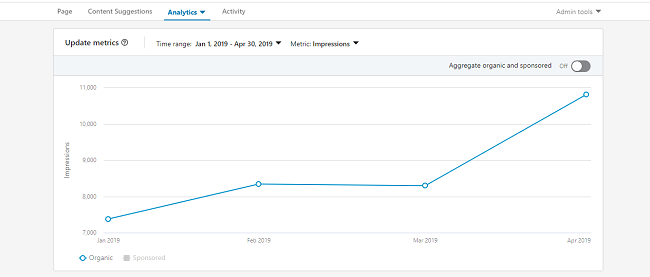First things first: why do a social media audit? Well, audits are traditionally used to show whether or not a business’ processes, systems and products are effective, efficient, and of quality. An audit helps businesses evaluate and understand various aspects of their operation and uncovers the points where the brand can improve.
In today’s digital age, that same examination and analysis can be applied to new aspects of business. Case in point, social media. Social media audits are important for brands because they show what the company is doing well, what the company could be doing better, and how the company can take steps to enhance its performance. In this post, we’ll go over all the things you need to add to your social media audit checklist to increase conversions and drive business.
How to Conduct a Social Media Audit
Audits are rarely fun, but when you know the research will significantly help your business and improve its digital presence, all the leg work is worth it! Conducting a social media audit is a process whereby each step helps you gain a comprehensive understanding of your company’s digital status. As the audit unfolds, you have to remember to tie your findings back to the question: how can this be improved? After all, while not all broken things need fixing, they can certainly do with a little bit of improvement. This mindset will help you reach your final goal of increasing conversions for your brand.
Step 1: Know What You’re Looking for
Going into a social media audit without a clue as to what you’re looking for is like going into the woods and looking for a green leaf. Before you begin the audit, determine the key performance indicators (KPIs) you want to asses. To name a few examples: engagement, impressions, conversions, account activity, and for the companies who do use a paid social strategy, ad spend. After you’ve determined your KPIs, create a general social media audit template that will help you compare and contrast these factors. This template can be as simple as an Excel spreadsheet with the factors going down the Y column and your social accounts going across the X column.

Step 2: Examine Each Factor
After determining the KPIs you want to asses on your social media audit, you need to actually examine those items on your social accounts! You can do this a number of different ways. One easy way is by using each platform’s own analytics system. For Facebook, LinkedIn, Twitter, Instagram, YouTube, and a majority of all other social platforms, you can use their native analytics system that reports your content’s performance. By looking through these reports, you can see different trends in the data as they relate to things like engagement, impressions, and conversions on your social platforms.
If you’re a business owner who has multiple accounts with a handful of different divisions, you’re likely using a social media publishing tool like Buffer or Hootsuite. Good news: Those sites also have their own analytics tools that help you keep track of your content performance! They also have weekly reports so you use organized charts and graphs to see what’s going well and what’s not. You can also opt for these reports to be sent to your email, which will help give you a status update of your social sites before you conduct your full and comprehensive social media audit.
Step 3: Think of Content Diversity
How diverse is the content you’re publishing? Apart from the KPIs you previously determined, one of the items you need to take note of (especially with social media) is content diversity. In other words, the kind of content you are churning out and the kind of content you could post more of. If you have a lot of pictures on your accounts, consider posting video content more often. Lots of stock imagery? Take your own photos or publish an infographic. This is a great social media strategy for local business owners because diversifying your content will help you reach different users in your target audience, boost your SEO efforts, increase your brand’s visibility and improve brand awareness.
Step 4: Assess Your Branding
Branding across social media for businesses is important because it shows authority and authenticity. For your social media audit in 2019, be sure to have standard branding across all your social channels. This will look like each social profile having the same profile picture (which is usually the brand’s logo), cover photo, publishing aesthetic, and description. These elements will help your business achieve a more cohesive digital presence. This also directly correlates to your brand’s conversions as consistent branding increases revenue by 22%! Sue Cockburn of Growing Social Biz says, “[b]usinesses use branding to help them stand out and be easily recognized by those they hope to reach. Branding can help create a positive first impression for consumers before they know you. It also helps consumers recognize your products and services from competitors once they do know you.”
Step 5: Identify Top Performing Posts
After you’ve completed the above steps, you’ll want to identify your top performing posts. This is important because you need to know the kinds of content your users like to engage with. On top of content type, analyze the actual content and asses what specifically about those posts that made them so popular. Maybe they were funny, visually appealing, emotional appeals, or controversial. After your analysis, consider how you could leverage this information and apply it to your social posts moving forward to increase your impression and engagement count.

Step 6: Identify Top Performing Platforms
Apart from identifying your top performing posts, you also need to know which platforms are worth your time, effort, and money. After the content has been reviewed, it’s time to review which sites you want to double down on and which sites you can leave on the back burner. By determining which social platform is best for your business, you can focus on increasing your brand awareness and advertising efforts there. For the social sites where your content is not performing so well, you can conduct a social media competitive analysis to see what your competitors are doing and what you can learn from them to help boost your own presence on that social platform. Kiera Stein of Social Media Examiner says, “ [t]he great thing about social media after all is that it’s social. Everything your competitors do on social media is public, and ready to be analyzed.”
Step 7: Understand Your Audience
With every social media platform comes a different audience your brand will cater to. For instance, an audience on LinkedIn will not be the same audience you’re targeting on Snapchat. To better serve each audience on each platform, research the demographics and determine who want your audience to be. (For all the over achieving rockstars, to take it a step further and make a plan for how you want your team to create content that appeals to that specific audience.)
Step 8: Create an Improvement Plan
After all this research has been conducted, the golden question still remains: how will you use this information to increase your conversions? If you know engagement is down on Twitter and you only post pictures, but you also know engagement is up on Facebook where you show a lot of videos, incorporate more videos in your social media marketing plan for Twitter! Take the findings from your research and create a plan with your team that will help you generate more interactive and engaging content for your business.
Step 9: Implement the Plan
Once you’ve created the plan of attack, it’s time to attack! You’ve made the plan and now you need to follow through with it. If execution isn’t really your strong suit, rest assured knowing there are a bunch of AI-powered tools on the internet that will help you achieve your goals. To name some of our favorites:
- HubSpot’s content strategy tool that helps marketers find new content marketing ideas that perform well
- Lexalytics that conducts text and survey analysis and “leverages machine learning, artificial intelligence and natural language processing to allow enterprises to create custom analytics solutions to address their unique data problems”
- Marketbrew as an AI powered solution for SEO teams that helps search efforts by predict search engine rankings
- Wordsmith from Automated Insights that turns data into insightful narratives
Make your next social media marketing plan as elaborate as you want because these AI powered tools are here to make it happen.
Step 10: Do it All Again
After all is said and done, you’ll need to do it all again. That’s right—after you’ve conducted your social media audit, it’s time to plan the next one. These audits can be conducted every year, every quarter, and even every month.
Key Takeaways
Whew! That was a lot of information to take in at once, but your social media channels will be all the better for it. We hope this social media audit checklist has helped your team achieve a more well-defined social strategy. To help make sure these tips really stick in your head, here they are one more time:
- Determine your KPIs so you know what to look for when auditing your social accounts
- Use native analytics platforms to examine each factor listed in your KPIs
- Review your content diversity and think about adjusting your social content as necessary
- Assess your company’s branding to promote cohesiveness, authority, and authenticity
- Identify top performing posts to reveal what your users interact and engage with the most
- Identify top performing platforms to show which social sites you need to focus more on
- Conduct an audience analysis to better serve your users
- Create an improvement plan based on the information you found in your research
- Implement the plan with the help of AI-powered social media marketing tools
- Do it all over again when you feel it’s necessary!
If anything else comes up, we’ve got you covered with some social media audit services.





Tell us your thoughts in the comments